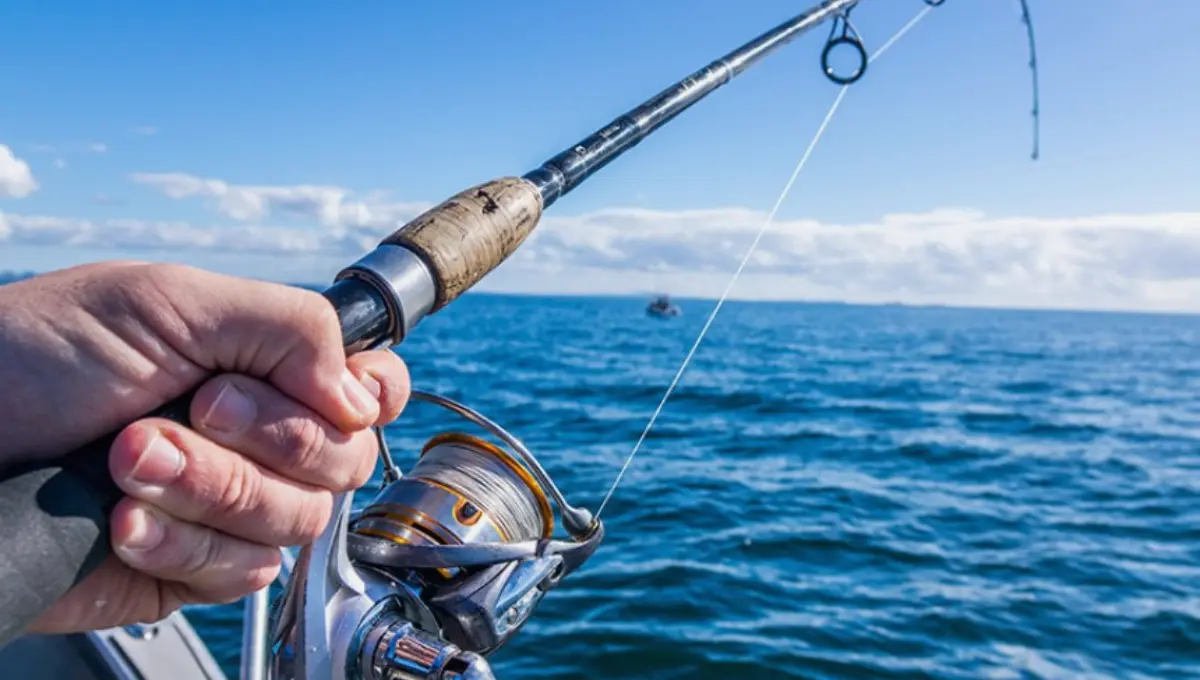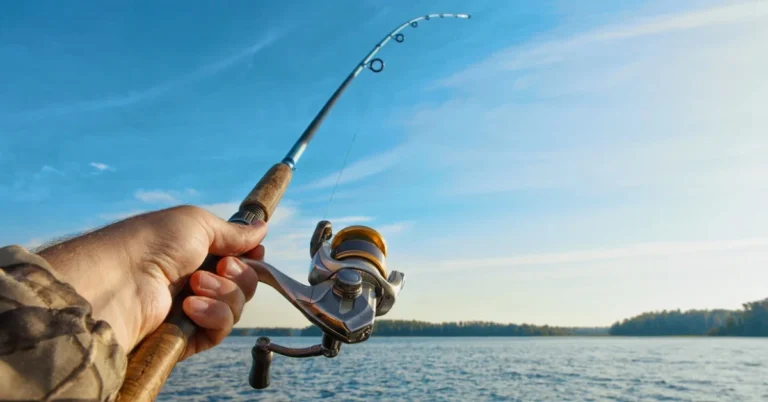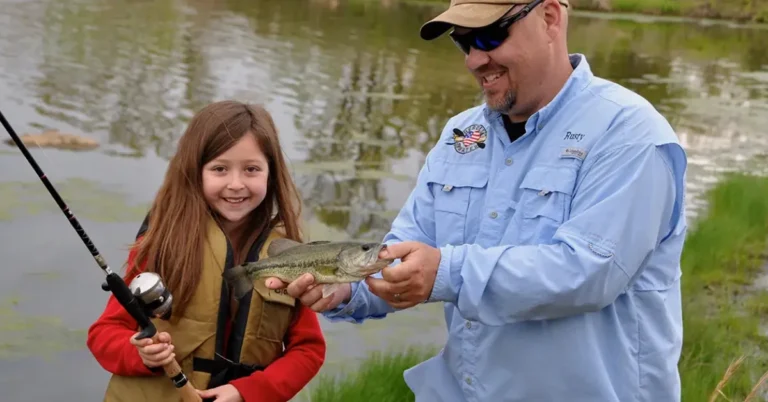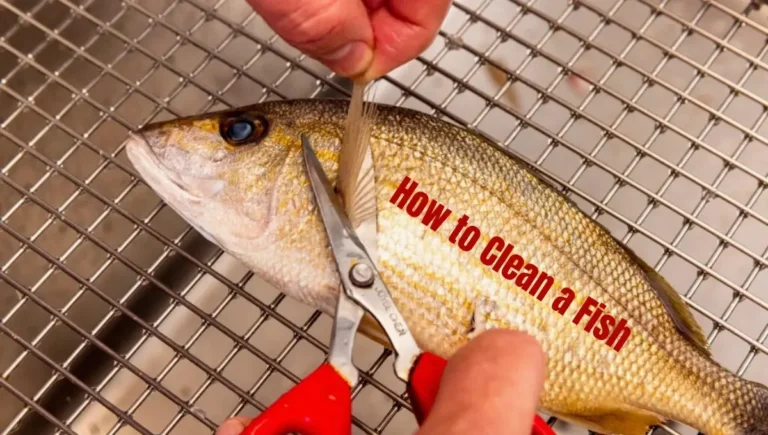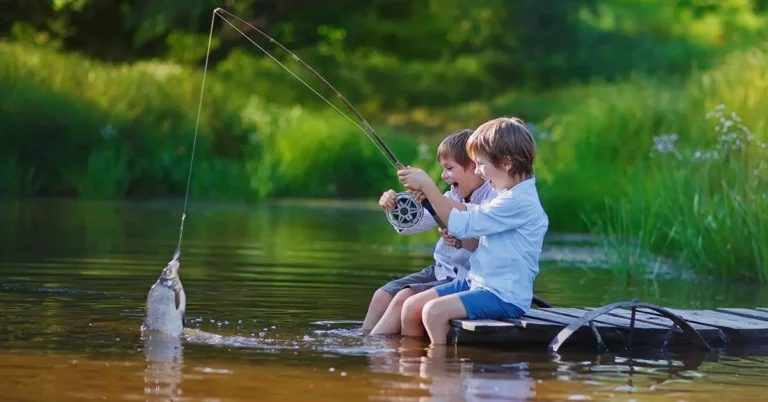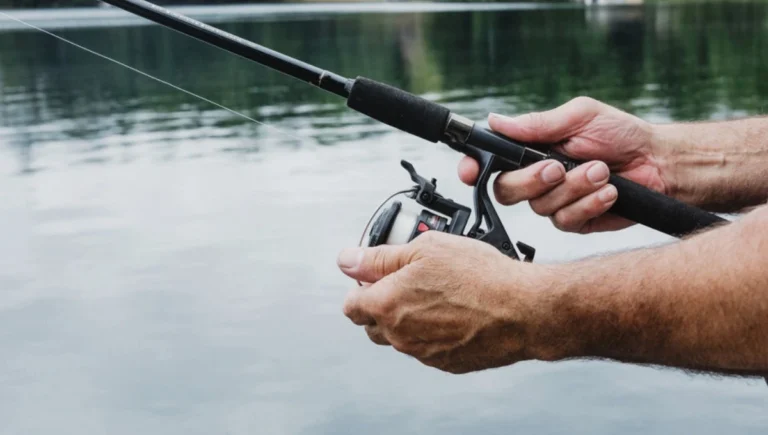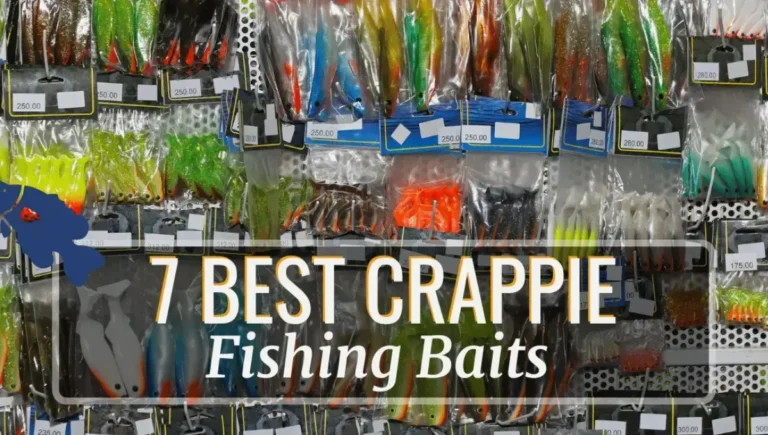How To Cast A Spinning Reel: Grip, Cast, And The Fight
Casting a lure or bait out onto the water is essential for any angler to fish with a spinning reel effectively. However, mastering the casting technique can take some practice to get it just right.
In this article, we will break down the key steps to properly grip your rod, perform a backcast and forward cast, and how to engage a fish once you get a bite on your line.
Learning the proper casting method will help you increase your distance out on the water as well as your chances of hooking into that big one.
Also Read: How to Clean a Fish: Detailed Top 7 Step-by-Step Guide?
Get The Right Gear
If you’re unsure about matching rods and reels; we have guides available for various fish species and fishing styles. These guides can help you make informed decisions.
Using And Setting Up A Spinning Reel
Setting up and using a spinning reel for fishing is a straightforward process. Here’s a step-by-step guide to help you:
Facial Recognition Feature
1: Gather Your Equipment
Before you begin, ensure you have the following equipment:
2: Thread the Fishing Line
Start by threading the fishing line through the guides on your spinning rod. Begin with the guide closest to the reel and work your way toward the tip of the rod.
3: Attaching Line to Reel
Open the bail (the wire arm on the spinning reel) and tie the fishing line to the spool using a secure knot. You can use a Uni knot, Palomar knot, or any other knot you are comfortable with.
4: Spool the Reel
Hold the fishing line taut with one hand and use the other to turn the reel handle. This action will evenly spool the fishing line onto the reel. Fill the reel until it’s about 1/8 inch from the edge of the spool lip.
5: Close the Bail
Once the reel is adequately spooled, close the bail by flipping it over the spool. This prevents the line from coming off the reel during casting.
6: Set the Drag
Identify the drag adjustment knob positioned on the reel’s top section. Rotate it clockwise to heighten resistance and counterclockwise to lessen it. The drag mechanism regulates the pressure required to pull the line from the reel. Tailor the adjustment to match the specific type of fish you’re aiming to catch.
7: Attach the Lure or Bait
If you haven’t already, attach your selected lure or bait to the end of the fishing line using an appropriate knot.
8: Ready to Cast
Hold the rod with your dominant hand, grasp the reel handle with your non-dominant hand, and you’re ready to cast. Open the bail, hold the line with your finger, make your cast, and release your finger to allow the line to flow.
Remember to practice your casting technique to achieve better accuracy and distance. With these steps, you should be all set to enjoy your fishing experience with a spinning reel.
Gripping And Holding Your Fishing Rod
Certainly! Here’s a simplified guide to four important steps for gripping and holding your fishing rod:
1: Determine the Dominant Hand
Identify your dominant hand, which will control the rod. Hold the rod handle with this hand.
2: Basic Grip
Place your thumb on top of the rod handle and wrap your fingers around it for a secure yet relaxed grip.
3: Trigger Grip (If Applicable)
If your rod has a trigger just above the handle, slide your index finger in front of it for added control.
4: Reel Handle Grip
If the reel is on the bottom, hold the reel handle with your non-dominant hand. For spinning reels, cradle the reel between your middle and ring fingers.
Remember to find a comfortable balance, avoid excessive tension, and allow a slightly looser grip during casting. With these four steps, you’ll have a solid foundation for holding your fishing rod effectively.
Casting Techniques
Now that your rod and reel are ready, and you’re in the casting position, it’s time to learn two fundamental casting techniques for various situations.
Overhead Cast
Overhead Cast in Important Steps:
1. Grip and Stance
- Hold the rod with your dominant hand.
- Grip the handle with your thumb on top and fingers wrapped around.
- Stand with feet shoulder-width apart for balance.
2. Open the Bail or Release the Line
- For spinning reels, open the bail.
- For baitcasting reels, press the release button to free the line.
3. Preparing for the Cast
- Smoothly bring the rod tip back over your shoulder.
- Extend your arm and rotate your hips slightly for power.
4. Forward Swing
- Swing the rod forward toward your target.
- Release the line for spinning reels or close the bail for baitcasting reels.
5. Pointing the Rod
- Point the rod toward your target as the forward swing completes.
- Maintain a straight line with the rod during the cast.
6. Practice Timing and Release
- Time your release with the forward swing for accurate casts.
- Experiment with force and speed for different distances.
7. Follow Through
- Follow through with the rod’s natural path after the cast.
- Keep your eye on the target and be ready for bites.
8. Retrieve Line and Repeat
- Retrieve the line as needed based on your fishing style.
- Repeat the process, adjusting the technique for different conditions.
Sidearm Cast
1. Grip and Stance
- Hold the rod with your dominant hand.
- Grip the handle with your thumb on top and fingers wrapped around.
- Stand with feet shoulder-width apart for balance.
2. Positioning the Rod
- Hold the rod parallel to the ground.
- Align the rod horizontally, keeping it close to your side.
3. Preparing for the Cast
- Get ready for the cast by keeping the rod low and parallel to the ground.
- Rotate your hips slightly to generate power.
4. Sidearm Motion
- Using a sidearm motion, swing the rod forward.
- Keep the rod parallel to the ground throughout the swing.
- This motion allows for a lower trajectory, useful for casting under obstacles.
5. Pointing the Rod
- As the rod reaches the forward position, point it directly toward your target.
- Ensure a smooth transition from the sidearm swing to pointing the rod.
6. Release or Close the Bail
- Release the line for spinning reels or close the bail for baitcasting reels.
- Time the release or closing action with the forward swing.
7. Casting under Obstacles
- Utilize the sidearm cast to cast under low-hanging obstacles effectively.
- Adjust the trajectory by modifying the angle of your sidearm swing.
8. Different Angle Casting
- This technique provides a different angle for casting, useful in various fishing scenarios.
- Experiment with the sidearm cast to adapt to specific fishing conditions.
9. Practice
- Practice the sidearm cast in open spaces to get a feel for the motion.
- Develop muscle memory for a consistent and accurate sidearm cast.
Post-Casting
Let’s dive into the exciting part – reeling in the fish! When you feel that anticipated tug, it’s time to engage in the battle with the fish.
1. Set the Hook
- Embed the hook in the fish’s mouth by giving your rod a firm, swift pull either upwards or sideways.
- In regular situations, a firm upward hookset is standard. However, in dense cover like weeds, opt for a sideways hookset to prevent entanglement and guide the fish away from the cover.
2. Reeling In
- Start reeling in the fish while maintaining consistent pressure on the line to prevent the fish from escaping.
- Avoid allowing the line to go slack; this ensures continuous tension during the retrieval.
3. Handling Sudden Bursts
- If the fish makes a sudden burst and overcomes your drag, allow it to run.
- Wait for the fish to tire out; when you feel reduced tension, resume reeling.
- If the fish runs too much line, consider gently tightening the drag, though it’s generally not recommended during the fight.
4. Bringing the Fish Out of the Water
- Once the fish is reeled in, prepare to bring it out of the water.
- Use a net, gaff, or your hands (with fishing gloves) to safely handle the fish.
- Be cautious of sharp scales and potential injuries from hooks and fish teeth.
5. Storing the Catch
- To keep the fish fresh, consider storing it in a fishing cooler.
- This ensures your catch stays fresh if you plan to continue fishing without heading home immediately.
By following these steps, you’ll enhance your chances of successfully reeling in and handling your catch, ensuring a rewarding fishing experience.
Frequently Asked Questions
Conclusion
And that’s it! If you follow these steps, you’ll be well on your way to catching fish.
Here’s a final tip before we finish: when you’re dealing with a fish, think of it like a dance, not a fight. Move with the fish and guide it away from any obstacles in the water.
Remember, the best way to learn is by doing, so don’t worry if you make mistakes. Just enjoy the experience, have fun, and keep learning. Once you get the hang of using a spinning reel, you might even want to try using a baitcasting reel!
If you need any fishing gear, we’ve probably got a guide for it. And if you’re just starting, check out our tips and guides on how to catch fish. Now, go out there and start fishing!
